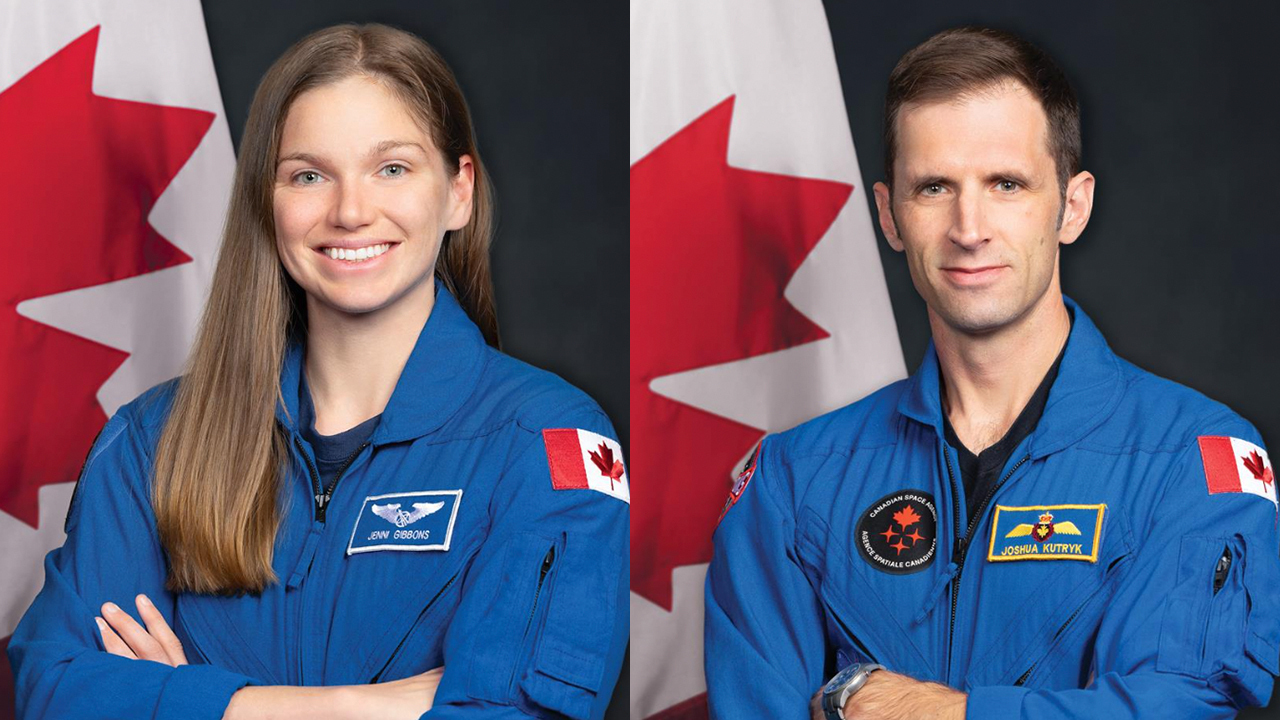
MONTREAL, Quebec - The Canadian Space Agency announced two astronauts will fly to space in the coming years on Wednesday (Nov. 22) as the country continues a historic ramp-up of its human space program in 2023.
François-Philippe Champagne, the Minister of Innovation, Science and Industry of Canada, announced the assignments in front of a crowd of hundreds gathered in the lobby of Canadian Space Agency headquarters in Longueuil, Quebec.
In the first assignment announcement, CSA astronaut Jenni Sidey-Gibbons was selected as a backup to Jeremy Hansen, mission specialist aboard NASA's Artemis 2 moon mission. Sidey-Gibbons will also serve as capsule communicator during Artemis 2, or CAPCOM, the astronaut on Earth who will communicates with the crew members during their spaceflight.
Next, Champagne announced that Joshua Kutryk, a colonel for the Royal Canadian Air Force, will fly on his first spaceflight on Boeing's Starliner spacecraft for a six-month mission to the International Space Station (ISS) in early 2025. Prior to his selection for CSA in 2017, Kutryk was a test pilot who used to lead the unit responsible for flight testing all operational fighter aircraft in Canada. Kutryk previously served as CAPCOM for Starliner's first successful uncrewed flight to the ISS in May 2022.
Related: What 1st Canadian astronaut on moon mission is learning from his crewmates (exclusive)
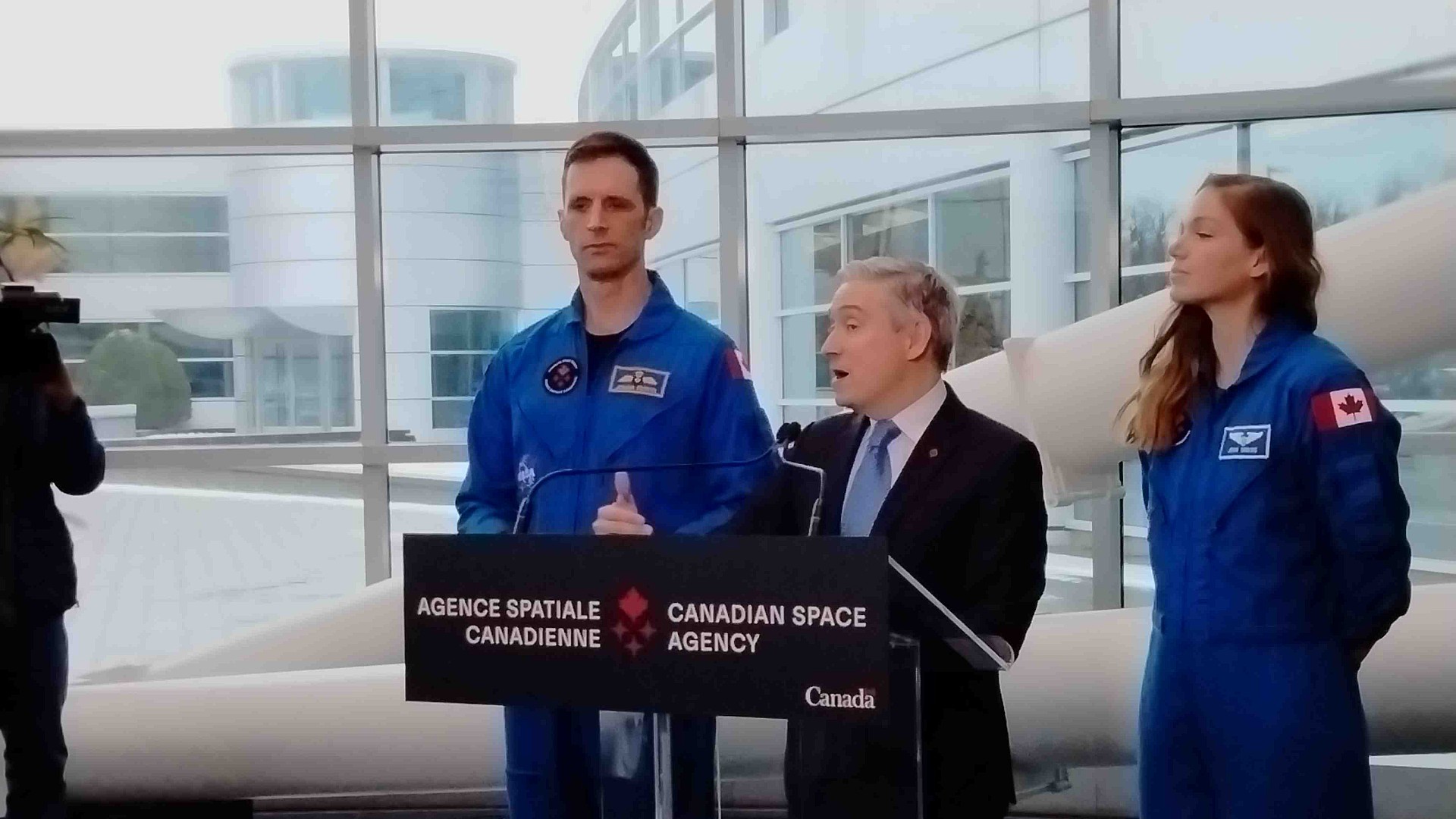
"As a part of the Artemis 2 backup crew, I will work to define and develop the procedures and architecture required for humanity's return to the moon," Sidey-Gibbons said in a statement. "I will train as a capsule communicator, ready to act as the link between the ground team and the Artemis missions when in Mission Control. I will train alongside the crew and will be ready to support them in whatever capacity their mission requires. Finally, I will be prepared for future missions critical to Canada's space program. I look forward to bringing Canada with me on this journey."
If Sidey-Gibbons flies to space during Artemis 2 in place of Jeremy Hansen, it will be the astronaut's first spaceflight, making her the third Canadian female in space. Sidey-Gibbons is a fire scientist selected by CSA in 2017. Her spaceflight follows short-term excursions by two other CSA astronauts: Neurologist Roberta Bondar (space shuttle mission STS-42 in 1992, for 8 days) and engineer Julie Payette (STS-96 in 1999 and STS-127 in 2009, for 25 days collectively).

CSA's assignments on Artemis 2 stem from CSA's promise of Canadarm3, a new robotic arm that will aid in maintenance and repairs of NASA's upcoming Gateway space station. Canada is also a member of the Artemis Accords, an initiative co-led by NASA and the U.S. Department of State that lays out a framework for peaceful cooperation in space.
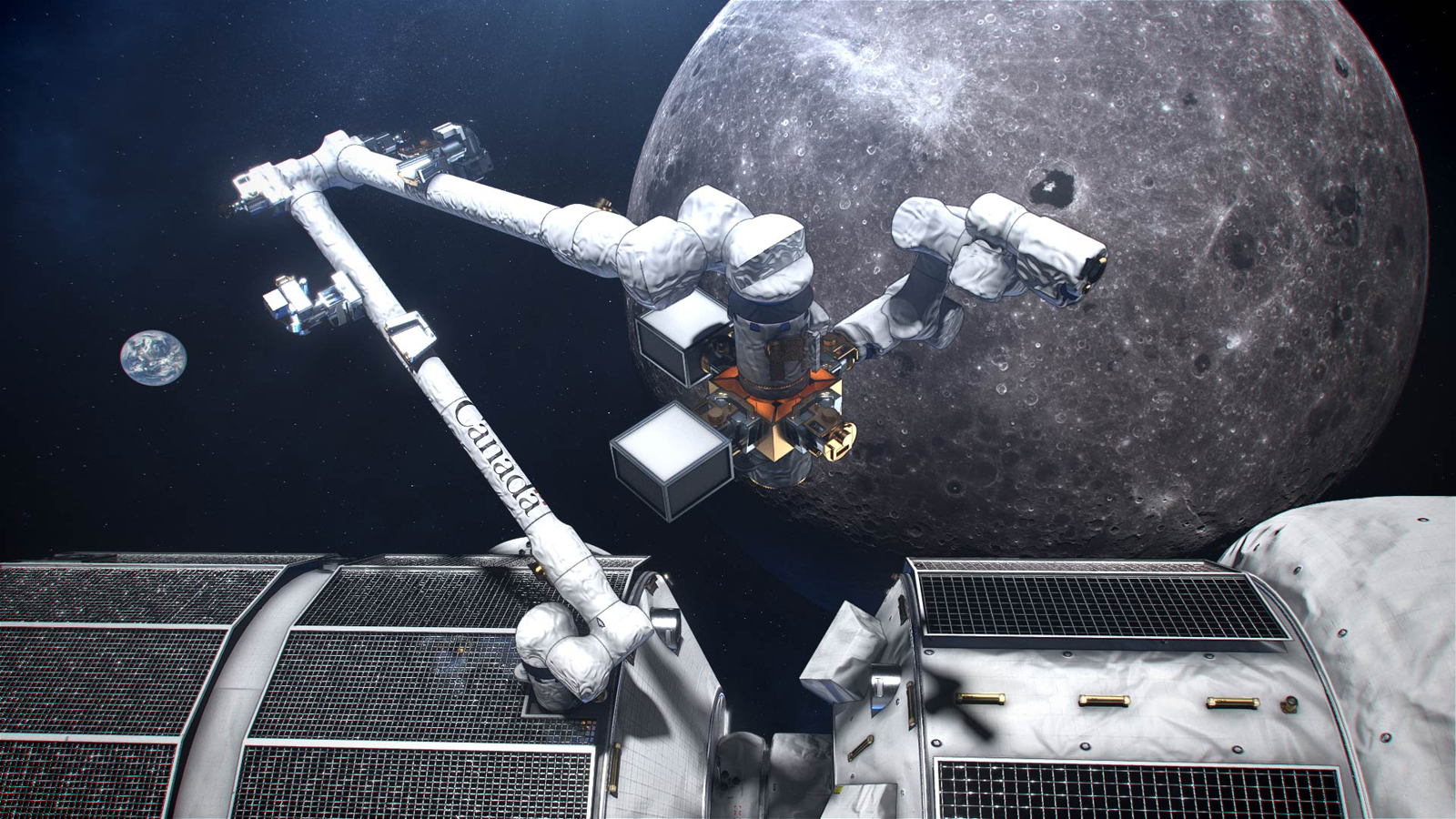
Kutryk's assignment will make him the first CSA astronaut to fly on NASA's commercial crew program. Kutryk won't be the first Canadian to fly on a commercial spacecraft, however; Canadian entrepreneur Mark Pathy already used SpaceX Crew Dragon for the private Ax-1 mission from Axiom Space in April 2022.
"Space is about collaborating for a better future. It's about our future; it's about Canadian prosperity. Our country decided decades ago to invest in space because it helps us solve challenges for Canadians, and we are still driven by this purpose today," Kutryk said in a statement. "I'm committed to making the most out of this incredible opportunity for our country."
CSA gets a seat on the International Space Station every six years under its agreement to furnish robotics like the Canadarm2 robotic arm currently aboard the orbital lab. The last CSA astronaut to fly to space was medical doctor David Saint-Jacques, who spend a record 204 days on the ISS in 2018-2019, longer than any other Canadian.
Related: Artemis 2 astronaut Jeremy Hansen says a Canadian will walk on the moon one day

"These assignments are clear proof of the impressive reputation our astronaut corps has," Champagne said in a statement. "From the International Space Station to the moon, Jenni Gibbons and Joshua Kutryk are about to write an exciting new chapter of Canada's history in space. Since their recruitment, they have both distinguished themselves repeatedly through their work with NASA and the CSA.
"Canadian astronauts are modern-day explorers, making them tremendous role models for Canada's future scientists, engineers and explorers," Champagne added.
Following the assignment announcement, Artemis 2 astronaut Jeremy Hansen posted a message of congratulations for the two astronauts on X (formerly Twitter):
Congratulations @Astro_Jenni and @Astro_Kutryk on the mission assignments today! pic.twitter.com/bM1oJHUFLUNovember 22, 2023
Wednesday's announcement builds on a surge of space activity in Canada in recent years, most especially a big moon announcement in April: CSA astronaut Jeremy Hansen, following a near 15-year wait for a spaceflight, will fly around the moon aboard the NASA-led Artemis 2 mission with three Americans. He will also be the first non-American to leave low Earth orbit.
While Hansen's assignment shone space attention on Canada anew, the country has been active in space for decades. Following sounding rocket research to probe the upper atmosphere in the 1950s and 1960s, Canada was the third country to send a satellite to space in September 1962 with Alouette. Communications was a key priority for the government to send information to the population, leading to support of satellites and even forming a Crown corporation satellite company called Telesat (today a public company trading on the stock market).
Foundational work on Canadarm, the country's famous robotic arm, began in the same era — including related tech testing with satellite antennas along with the lunar module's landing legs for NASA Apollo moon missions between 1969 and 1972. Canadian company MDA manages the Canadarm program today, following several changes over the decades.
As NASA opened up its human space program to international participation in the late 1970s, Canada selected robotics as an area where it could contribute a lot with a relatively modest number of tax dollars, given Canada has a small population compared to other space powers.
The first flight of Canadarm on space shuttle STS-2 in 1981 impressed NASA so much that it invited Canada to form an astronaut corps. Royal Canadian Navy commander Marc Garneau was the first to fly, with Canada's National Research Council, on STS-41G in October 1984 (as the CSA itself was not created until 1989.) Some notable early spaceflights included Bondar, the first Canadian woman in space (1992) and Chris Hadfield, the only Canadian to visit Soviet-Russian space station Mir (1995).
Related: What it's like to snag a spacecraft with the International Space Station's robotic arm
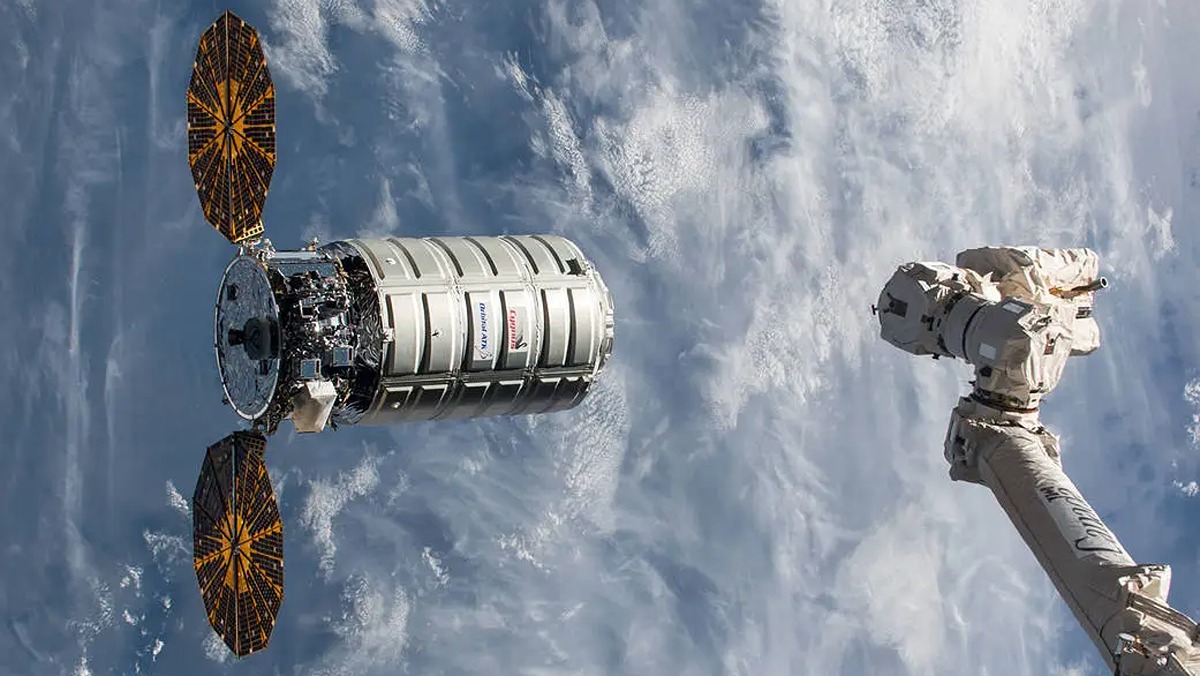
Canada has continued this "pay-to-play" arrangement — trading robotics capabilities for astronaut seats and science — for more than four decades. Canadarm2 was installed on the ISS in April 2001 on spacewalks including Hadfield, the first Canadian to do an extra-vehicular activity. A robotic helper, Dextre, followed Canadarm2 to the ISS in 2008.
As Canadarm2/Dextre represent 2.3% of the ISS partnership, however, that only equates to a Canadian spaceflight opportunity every six years with current spacecraft capacity. Prior to today's announcement, the previous recent Canadian ISS flights were in 2018-19 with David Saint-Jacques, and 2012-13 with Hadfield, also the first Canadian to command the space station during that excursion. (Note that some NASA astronauts had joint Canadian citizenship as well, such as fellow 2018 ISS commander Drew Feustel.)
Related: Artemis 2's Canadian astronaut got their moon mission seat with 'potato salad'
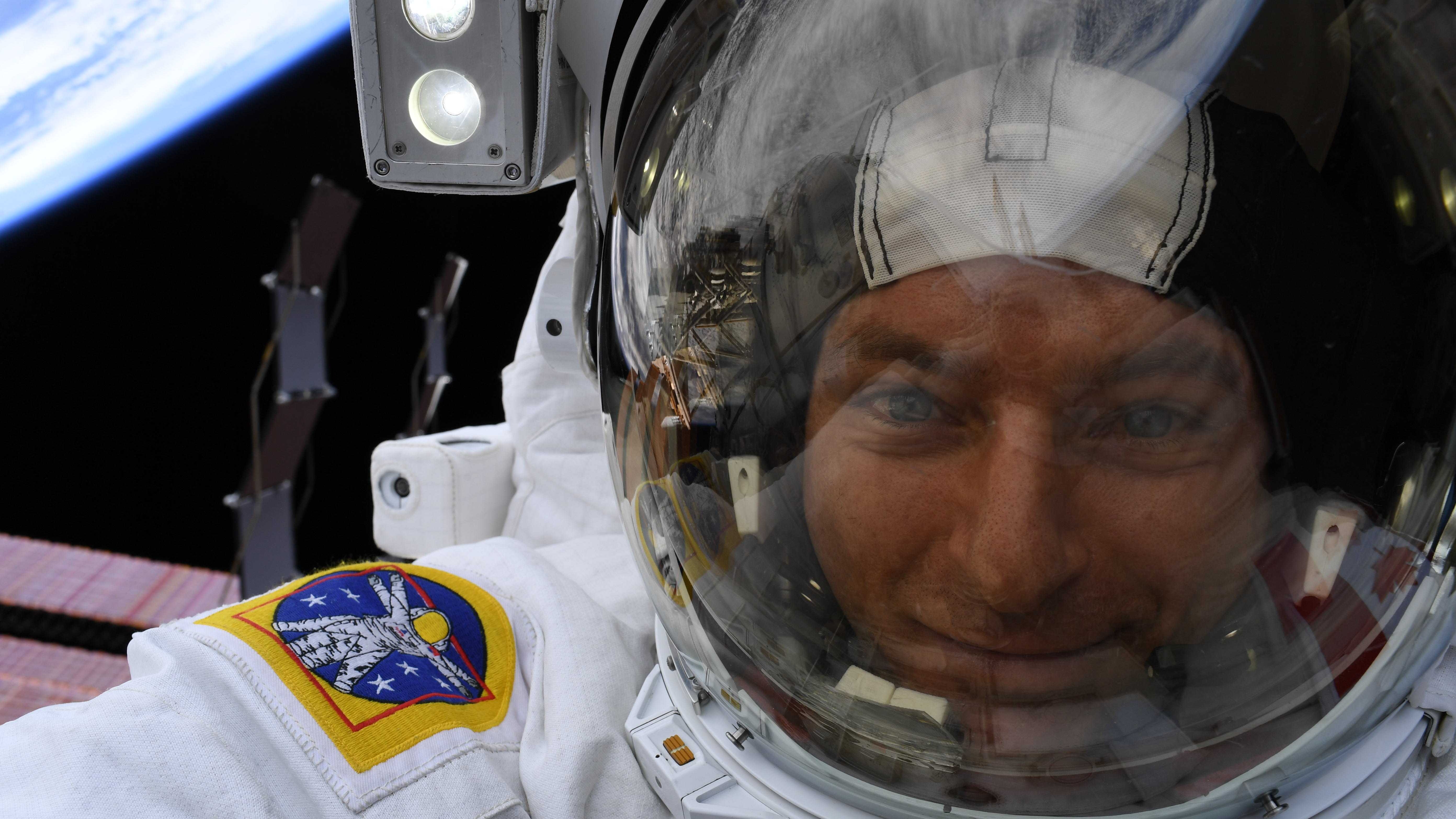
Hansen's mission came through a different funding strategy. Canada was an early signatory to the Artemis Accords, a multinational coalition pledging to support NASA's goals of space exploration. That support in 2019, along with the promise of a next-generation Canadarm3 for NASA's Gateway moon station, brought Canada the Artemis 2 opportunity along with future moon missions.
Artemis 2 has dominated Canadian space coverage in 2023, but that's not all the special space funding the CSA has received lately. The long-running Radarsat series (monitoring Earth since 1995) will get an upgrade and extension in funding announced this fall, for example.
Also on deck, per recent CSA announcements, are a mini-lunar rover targeted for landing in 2026, a lunar utility vehicle to support Artemis astronauts, and a funded commitment to work on the ISS until 2030 alongside most other partners. CSA is also co-supporting, with the Privy Council Office's Impact Canada, competitions to develop better health technology and food for deep space missions.
Then there's all the private activity. Among many things that could be mentioned: Pathy paid for his own seat to the ISS in 2021 on the private Ax-1 mission, in large part to do Canadian health research in space. Several Canadian space companies are also targeting payloads or robotic moon missions, either through CSA funding or through other avenues. On top of that, Maritime Launch Services is developing independent launch capabilities for Canada on the country's east coast. (The Canadian government pledged in 2023 to update and streamline launching regulations to support the nascent industry.)
CSA also signed a memorandum of agreement with Axiom in 2022, suggesting there may be pathways to bring Canadians to space more often. An example of how that may work is the European Space Agency "project astronaut" group, which are 12 individuals who passed astronaut selection but who continue work with their employer until they are asked to take a mission. Swedish project astronaut Marcus Wandt will fly aboard Ax-3 no earlier in January 2024, on a mission co-funded by several Swedish government groups and companies.







